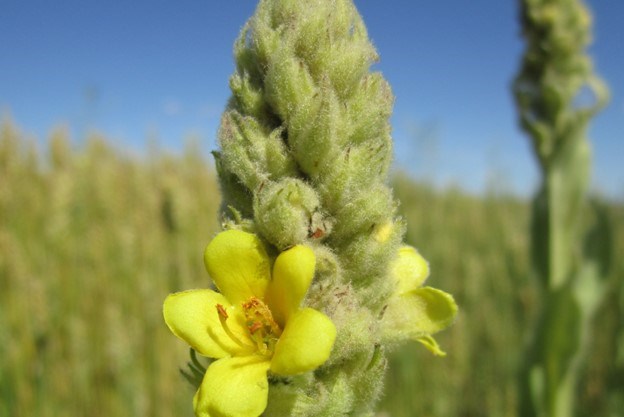The Glenbow Ranch Park Foundation sponsored an information talk Oct. 25, where attendees learned about some of the region’s invasive plants.
Invasive species are plants, usually introduced from somewhere else, that cause more harm than benefit. They exhibit aggressive vegetative reproduction, have high seed production, and can out-compete native plants for nutrients.
Some reproduce from the roots, and can be very hard to eradicate. Some produce up to 100,000 seeds per plant.
And they are very adaptable. An example is Scentless chamomile, which can change its longevity based on conditions.
It can be an annual, a biannual, or it can become what’s called a short-lived perennial, which means it will live for more than two years, but it will die.
The park enlists the help of volunteers employing a variety of control measures, many of which can be used by homeowners as well.
The park’s vegetation management lead Blake Weis explained what makes certain plants invasive, what negative impacts they have, and what can be done to control their spread.
One of the negative impacts is a directly measurable loss.
“Invasive plants cost Canadian agriculture $2.2 billion every year,” Weis said.
Inside the sprawling park in west Rocky View County, just a few kilometres southeast of Cochrane, Weis said a variety of control methods are in use, depending on the species being targeted. To illustrate the challenges presented by invasive species, Weis said some invasive plants, like common mullein, produce seeds that remain viable for up to 100 years.
He outlined a variety of mechanical attacks that are more or less effective depending on species: pulling, cutting, mowing and stabbing. Stabbing is the somewhat graphic description of a process whereby a sharp spade is used to cut through the stem of the plant at ground level.
For some invasive species, Weis said herbicidal control works best, and another approach is what he called cultural control, which refers to keeping surrounding native plants healthy so they can compete better.
As Weis and his volunteers fight the good fight against invasive plants at Glenbow Ranch Provincial Park, the battle goes on across the prairie landscape as well.
Farmers and ranchers can reduce the spread of unwanted species by cleaning equipment when moving from field to field, removing burrs and seeds from clothing, and encouraging light to moderate rotational grazing.
And some of Weis’s advice was applicable to people looking to eradicate invasive species from their yards.
He saved the simplest and most effective strategy for homeowners fighting invasive plants for the conclusion of his presentation.
“Don’t plant them. Plant a nice-looking native plant instead,” he said.
There are plenty of native plants to choose from, Weis added, and some gardeners unwittingly plant introduced species, only to face unexpected, unwanted and aggressive overgrowth later.
The Alberta Invasive Plant Identification Guide is available to download from the provincial government’s publications website at open.alberta.ca.
To find a nearby native plant society or to learn about local native species, go to the Canadian Council on Invasive Species ‘Be Plant Wise’ program at canadainvasives.ca/programs/be-plant-wise.
To support the Glenbow Ranch Provincial Park Foundation through the Steward an Acre program, go to [email protected] or call 403-851-9053.




